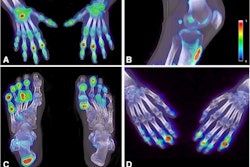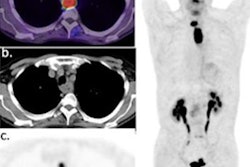Tuesday, November 29 | 9:30 a.m.-10:30 a.m. | T3-SSNMMI05-5 | Room E351
In this scientific session, a retrospective study will be presented that evaluated the accuracy of somatostatin receptor (SSR)-PET/CT for detecting liver metastases in differentiated neuroendocrine tumors (NETs).Presenter Dr. Matthias Fabritius of Ludwig-Maximilians University in Munich, Germany, and colleagues examined data from 122 patients with differentiated NETs (grade 1/2) and at least one suspicious SSR-PET/CT imaging finding with a hepatic histopathologic correlate. In all, 147 SSR-PET/CTs were evaluated independently by two readers.
SSR-positive metastatic hepatic involvement on PET/CT was reported in 98.6% (n = 145) cases, while histopathology showed hepatic involvement of NETs in 92.5% (n = 136) of cases. In 7.5% (n = 11) of cases, histopathology was negative, despite suspected liver metastases in SSR-PET/CT scans. In 7 of 11 cases in which a rebiopsy was available, SSR-PET/CT confirmed findings of liver metastases in 5 cases; 2 of the rebiopsies confirmed the negative histopathologic results.
The positive predictive value (PPV) of SSR-PET/CT for the detection of liver metastases was excellent at 92.4%, Fabritius noted. In comparison with histopathology and rebiopsy, SSR-PET/CT achieved an even higher PPV of 95.9%, even though in 4/11 cases a rebiopsy result was not available.
"SSR-PET/CT represents an important diagnostic tool in the detection of hepatic involvement in NET patients and should be part of NET tumor staging and restaging," Fabritius wrote.
Stop by this Tuesday scientific session to get all of the details.





















